By: Jessie Snowdon, New Zealand Registered Physiotherapist, Director On the Go Physio Limited, March 2022
Two years into New Zealand’s journey with COVID and these days can seem harder than ever. We have endured lock downs and now we are in this strange no-man’s land where it feels for many older adults, that in order to stay safe we must stay home.
Strength is IMPORTANT!
If you are not getting your usual physical activity, or if you have never been that keen on exercise (!) then you should try and build in some structured exercise every day. Exercise can come in many ways – gardening, bowls, walking – and although these are all excellent ways to get in your recommended 150 minutes a week, the real hero of the story is building strength.
As we age we naturally lose muscle strength, and our muscle fibres change – but age is NOT a barrier to improving strength and muscle mass. We know that there is a direct link between strengthening exercises and decreased risk of falls, and we all want that!
How can I strengthen my muscles?
In order to make change you must put your muscles under a certain load…and this means it must be hard! The great news is that you don’t need to spend much time, if you hit the right level of ‘hardness’. You can work through a strength programme in 10 minutes!
We recommend that you start with 10 repetitions of each exercise for a few days, and then find the level at which doing 6-8 of the exercise feels “hard”. “Hard” means that you don’t feel you could do any more without a rest.
When you have established that level you should work through your whole programme then take a 2 minute rest. Then, guess what? Do it all again!
Which muscles should I strengthen?
You should strength the muscles you need for function. This means the ones you need for every day activities like standing up from a chair, walking fast, picking up objects and helping with balance.
The programme below covers off all of these.
Is there anything I should be careful of?
With all exercise you should be aware of and stop if you experience pain in your muscles or joints, chest pain, severe shortness of breath or severe dizziness. Remember though that when you work your muscles hard you can expect to have slight soreness the next day or so, especially when you have just started.
Ok I’m ready! Show me the exercises!
As you are all individuals it is hard to prescribe one set of exercises for everyone. You will need to apply some common sense and ensure you feel safe during each exercise. If you are unsteady, or usually use a walking stick or frame, then ensure you are holding on to the bench or table – or have your frame in front.
Ready….let’s go!
Exercise one – Standing up and sitting down
This works the muscles you need to get from a chair but also to bend down, walk, climb stairs – it is an excellent all round functional exercise.
- Start in a firm chair that you know you can stand up from.
- Using both hands lean forward and then stand up.
- Repeat this 6-8 times.
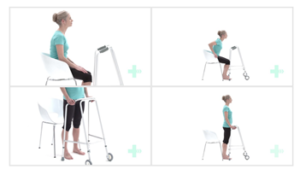
Easy? Make it harder by…
- Speeding up.
- Just use one hand.
- Use no hands (cross arms across chest).
- Sitting on a lower seat.
- Holding something heavy in your arms such as bottled water, or some weights.
Exercise two – rising up onto tip toes
As long as you aren’t hanging on for dear life this is an excellent whole leg work out. You need strong calf muscles to walk and for balance.
- Hold onto a steady surface such as a kitchen bench or back of a chair.
- Rise up onto your tip toes, as high as you can.
- Try to go straight up, not forward.
- Repeat 6-8 times.
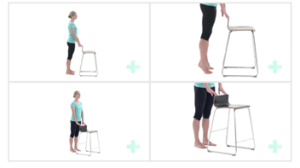
Easy? Make it harder by…
- Decreasing your hand grip so you just use index fingers.
- Putting a back pack on with weights such as bottled water in it.
- Lift one leg off the ground and take all the weight on one side!
Exercise three – standing on one leg
This works the muscles around your hips and is excellent for stability and balance.
Hold onto a steady surface.
- Make your left leg strong and gently lift your right.
- Focus hard to ensure your hips stay level – your trunk and shoulders shouldn’t move!
- Hold for 5 seconds then swap sides.
- Repeat 6-8 times on each side.
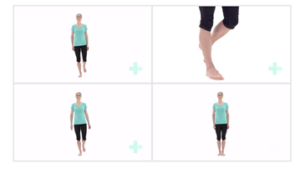
Easy? Make it harder by
- Standing for 10 seconds
- Decreasing how much you use your hands, change to just index fingers, or no hands!
Exercise four – push ups!
Strong arms are essential for helping you pick up and carry objects, and to push yourself up from a chair, bed or the floor. We often neglect our arms so make sure to include this one!
- Stand with your hands against the wall, have a chair next to you if needed.
- With fingers spread and arms close to your body allow your elbows to bend so you come closer to the wall.
- Breath out and push away back into standing.
- Repeat 6-8 times.
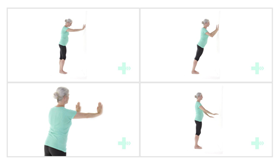
Easy? Make it harder by…
- Using the bench to lean on instead of the wall.
- Increase your speed.
This is an excellent starting point with four functional exercises. If you repeat all these then you should have a good 10 minute daily walk out. If you would like so extra balance exercises then read on!
EXTRA BALANCE EXERCISES
Balance exercises are harder to prescribe as everyone is at very different levels and you need to keep safe! Here are some options for balance work but ensure you are by a sturdy surface and work within your abilities.
Exercise one: Standing still balance
- Stand with your feet together, without holding on, for 10 seconds.
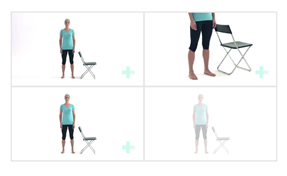
Easy? Make it harder by…
- Turning your head slowly side to side.
- Closing your eyes (with care).
- Changing your foot position into “step”.
Exercise two: walking backwards
- Carefully walk backwards alongside your bench. If you normally use a frame or walking stick then ensure you use if for this exercise.
- Focus on long, slow steps.
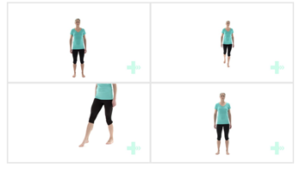
Exercise three: walking in a figure 8
- In an open space you can put down two objects (salt and pepper shakers, two water bottles) about 1 metre apart.
- Weave around these in a figure 8.
- Use your walking frame or stick if this is normal for you.
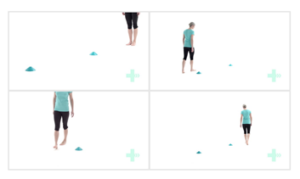
Easy? Make it harder by…
- Moving the objects closer.
- Going faster!
Congratulations! You are now carrying out a great exercise plan. If you are able to you should include regular walking at a good pace out in the community. You should also ensure that once you have done your daily exercises you don’t sit down the rest of day. Every 30 minutes you should be up on your feet, even if just for a minute or two.
If you would like more advice or and individualised treatment plan then we offer clinic, home and online appointments and would love to help you regain and maintain your strength.
